#Moccasin
Explore tagged Tumblr posts
Note
Moccasin is a scrawny adult female MudWing who's anxious & was concerned about her eggs hatching. One of her dragonets hatched from a blood red egg and she's the reason MudWings stopped killing blood red eggs.

Day 286- Moccasin
#sorry I’ve been getting lazy with these lately haha#wings of fire#wof#daily headshots#miscellaneous characters#mudwing#moccasin#moccasin wof
33 notes
·
View notes
Photo

Source details and larger version.
Vintage Native American art.
24 notes
·
View notes
Text
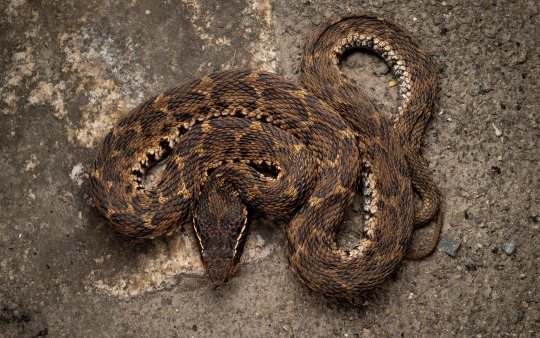
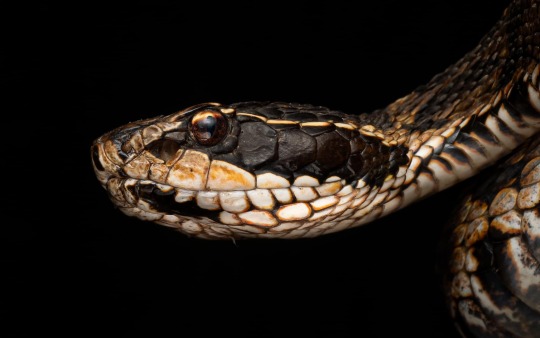
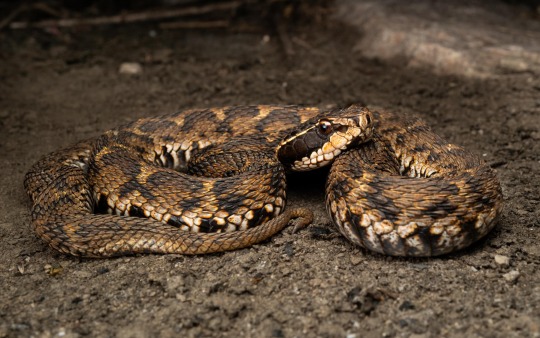
Asian Moccasin aka Chinese Mamushi (Gloydius brevicauda), family Viperidae, Shanghai, China
Venomous.
photographs by Adam Franc
131 notes
·
View notes
Photo
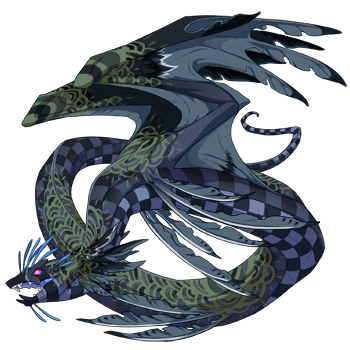
April 24, 2023:
Swamp Tertiary, Undertide, Ringlets.
Moccasin of corvidcasting’s clan!
3 notes
·
View notes
Text
No Moccasins · Lakota Story

No Moccasins · Joseph M. Marshall · Nordamerika · Lakota
Die Alten unter uns sind die besten Vorbilder dafür, wie wir unser Leben leben sollten. Jeder ältere Mensch ist eine Sammlung an Geschichten, aus allem, was er gesehen und erlebt hat, und all dessen, was sich während seines Lebens in der Welt zugetragen hat. Ich habe bisher noch keinen alten Menschen kennengelernt, der nicht eine überzeugende Verkörperung mindestens einer Tugend war, und viele verkörpern mehrere. So jemand war auch eine alte Frau namens No Moccasins. Sie lebte in einer Zeit, als es noch keine Pferde gab. No Moccasins und ihr Mann Three Horns, konnten auf ein langes Leben zurückblicken. Sie hatten einen Sohn und eine Tochter und mehrere Enkelkinder und No Moccasins war für alle Kinder im Dorf wie ein Großmutter. Sie war eine zarte Frau und in ihrem siebenundsechzigsten Winter hatten ihre Haare die Farbe frisch gefallenen Schnees angenommen. Die Falten in ihrem Gesicht schienen die vielen Wege darzustellen, die sie schon in ihrem Leben gegangen war. Kein Besucher hatte je ihre bescheidene, aber saubere Hütte mit hungrigem Magen verlassen und auch selten ohne ein hübsch gefaltetes Geschenk in der Hand. Sie war weit und breit bekannt für ihre Papierfaltkunst und ihre Muster, und viele Frauen kamen, um diese Kunst bei ihr zu lernen. Trotz alledem war sie hauptsächlich bekannt als die Frau von Three Horns. Three Horns war ein Mann mit ausgezeichnetem Ruf. Er war noch immer Krieger, als die meisten anderen Männer seines Alters die Stärke ihrer Arme und Beine sowie ihre Risikobereitschaft schon längst eingebüßt hatten. Im Laufe seines Lebens hatte er jede Menge Kriegsauszeichnungen erhalten - die Lanze, an der seine Adlerfedern angebracht waren, hatte die doppelte Länge eines ausgewachsenen Mannes. Jede Feder entsprach einer Auszeichnung und kein anderer Mann konnte sich damit messen. Als er schließlich den Kriegspfad verlassen hatte, nahm er seinen Platz im Ältestenrat ein. Dort teilte er selbstlos seine Weisheit und übertraf alle anderen an Redegewandtheit. Er war zwar bereits siebzig Winter alt, doch seine Erscheinung war atemberaubend. Er hatte nicht den dicken Bauch vieler Männer seines Alters. Er stand groß und aufrecht da und sein hüftlanges Haar war silberweiß. Im Dorf wandte sich jeder, der einen Rat brauchte, an Three Horns. Es schien, als ob er schon immer da gewesen sei. Deshalb konnte es das ganze Dorf auch kaum fassen, als er schwer krank wurde und sich auf sein Sterbebett begab. Die Nachricht verbreitete sich schnell und schon bald kamen sehr viele Menschen aus anderen Dörfern, um dem sterbenden Häuptling ihre Ehre zu erweisen. In wenigen Tagen schwoll das winzige Dorf von Three Horns auf die doppelte Größe an. No Moccasins, ihre Tochter und viele andere Frauen waren damit beschäftigt, zu kochen und alle Gäste zu versorgen. Als Three Horns davon erfuhr, wie viele Menschen gekommen waren, bat er die Ältesten der Versammlung in seine Hütte. Die vier Männer und zwei Frauen, die zur Hütte von No Moccasins und Three Horns gekommen waren, sahen, dass in der einen Hälfte der nach Norden ausgerichteten Hütte der lange Stab mit den Adlerfedern, Bogen, Pfeile und Schilder aus Büffelhaut standen, die farbenprächtigen Symbole eines ruhmreichen Lebens als Krieger. Three Horns sprach, geschwächt von seiner Krankheit, mit leiser Stimme zu No Moccasins, die neben ihm saß. Er schien jedoch stärker zu werden, während er sprach. No Moccasins kümmerte sich alsdann, wie sie es immer getan hatte, um das Wohl ihrer Gäste und das ihres Mannes und schwieg respektvoll. »Liebe Freunde und Verwandte«, begann Three Horns seine Rede, »ich möchte euch dafür danken, dass ihr in meine Hütte gekommen seid. Ich hatte die Ehre, fast fünfzig Winter lang diese Hütte mit meiner Frau zu teilen. In dieser Zeit wurden uns ein guter Sohn und ein gute Tochter sowie viele Enkel geschenkt. Unser Volk hat gute und schwierige Zeiten erlebt. Wir waren bisweilen auf dem Kriegspfad und gute Männer wurden verletzt oder getötet. Wir wurden von unseren Feinden gefürchtet und geachtet. In jener Zeit stieg die Zahl unserer Hütten und Dörfer. Wir sind ein starkes Volk, unsere Wege sind gut, und ich bin dem Großen Geist dankbar, dass er mich als Lakota auf diese Welt gebracht hat. Ich habe ein gutes Leben gehabt und ich bin bereit für das nächste. Aber bevor ich diese Welt verlasse, möchte ich eine Geschichte erzählen, und ich bitte euch darum, diese Geschichte morgen nach Sonnenaufgang all jenen weiterzugeben, die gekommen sind. Deshalb habe ich euch heute zu mir gebeten. Ich möchte, dass ihr das Folgende wisst. Als junger Mann brach ich vom Dorf meines Vaters und meiner Mutter in Richtung Süden auf, um zu jagen. Ich kam zu einem Sommerlager, das sich nördlich des Running Water River befand. Zu jener Zeit fanden dort Feiern und Tänze statt, da man einen großen Sieg über die Feinde im Süden errungen hatte. Man lud mich zu den Feierlichkeiten ein. Es war eine schöne Zeit. Es gab viel zu essen und wir tanzten bis spät in die Nacht. Als ich am nächsten Morgen erwachte, lag ich abseits des Pfads zum Wasser - und blickte in die schönsten Augen, die ich je gesehen hatte. Eine junge Frau starrte auf mich herab. Sie sagte: »Komisch, was auf einmal am Wegesrand wächst!« Sofort sprang ich auf, folgte ihr zum Wasser und trug die Wasserflaschen für sie zurück ins Dorf. Das war die beste Hausarbeit, die ich in meinem Leben je verrichtet habe. Am nächsten Abend stand ich vor ihrer Hütte in einer Reihe mit all den anderen jungen Männern, die gekommen waren, um ihr den Hof zu machen. Ihr Name war Carries the Fire und mein Herz entbrannte für sie. Ich war sehr überrascht, als sie mich bat, am nächsten Abend wiederzukommen. Es wird euch nicht wundern, wenn ich euch sage, dass ich bis zur Herbst-Jagd in ihrem Dorf geblieben bin. Inzwischen war sie, aus Gründen, die ich immer noch nicht verstehe, für die ich aber dankbar bin, zu der Auffassung gelangt, dass ich einen guten Ehemann abgeben würde. Also kehrte ich nach Norden zurück, um meine Familie zu unterrichten, damit sie die Geschenke an ihre Familie als Brautpreis vorbereiten konnte. Im folgenden Frühling heirateten wir. Dazwischen lag der längste Winter meines Lebens. Dann verließ ich meine Familie und wurde, so wie es bei uns Sitte ist, Mitglied ihres Dorfes. Kurz darauf fielen in unserem Dorf Feinde aus dem Süden ein, die auf einem Rachekriegszug für die zuvor erlittene Niederlage waren. Sie töteten einen Mann und entführten zwei junge Frauen. Ein Trupp folgte ihren Spuren in Richtung Süden. Auch ich war dabei. Wir verfolgten sie mindestens einen halben Mond lang und kamen dabei in ein Land, das ich noch nie gesehen hatte. Da wir schnell vorankamen, holten wir sie ein, als sie wieder bei ihrem Dorf angelangt waren. Wir versteckten uns und beobachteten. So sahen wir, wo sie die zwei Frauen hin brachten. Später entdeckten wir, wo die Wachposten waren, und machten einen Plan. Wir waren zu sechst. In jener Nacht sollten zwei von uns im Osten des Dorfes Feuer legen und zwei andere von uns im Westen. Während die Männer des Dorfes damit beschäftigt sein würden, das Feuer zu löschen, würden zwei von uns sich anschleichen und unsere zwei jungen Frauen zurückholen. Der Plan ging auf, mit einer Ausnahme. Ich war einer der beiden, die sich ins Dorf schleichen sollten. Und ich wurde gefangen genommen. In der Dämmerung waren unsere Krieger mit den beiden jungen Frauen zurück nach Norden geflohen und ich war froh, den Preis für eine gelungene Rache zu zahlen. Wie ihr euch vorstellen könnt, waren meine Feinde sehr wütend. Sie machten mich zu ihrem Sklaven. Mir wurden sämtliche Kleidungsstücke abgenommen - alle. Ich wurde nackt herumgeführt. Alle lachten. Sie zwangen mich zu arbeiten. Ich grub Pfahl-Löcher, bis meine Hände und Knie blutig waren. Sie quälten mich, sie warfen mir Schmutz ins Gesicht. Die Frauen zogen ihre Kleider vor mir hoch und lachten und zeigten mir damit, dass ich kein Mann mehr war. Sie gaben mir kein Essen und ich war gezwungen, mit den Hunden um die Abfälle zu kämpfen. Abends fesselten sie mich an Händen und Füßen und banden mich zwischen zwei Pfosten fest. Es gab kein Entkommen. Nach und nach begann ich, mich niedriger als ein Mistkäfer zu fühlen. Ich hatte jedes Gefühl für Zeit verloren, aber ich suchte trotzdem nach Fluchtmöglichkeiten. Doch durch den Mangel an Nahrung war ich sehr geschwächt und ich wusste, dass ich fliehen musste, bevor ich keine Kraft mehr dazu hätte. Nach einiger Zeit stellten sie keine Wache mehr für die Nacht auf. Ich zog an den Pfosten, an die ich gebunden war, und nach und nach gelang es mir, sie zu lockern. Doch jemand entdeckte, was ich getan hatte, und grub die Pfosten noch viel tiefer ein. Ich verlor den Mut. Ich schäme mich nicht, euch zu sagen, dass ich eines Nachts sogar den Großen Geist um einen schnellen Tod bat. Fliehen konnte ich nicht mehr. Ich war zu schwach. Eines Nachts war es sehr kalt und regnerisch, und ich war nackt und zitterte. Es war niemand zu sehen, sogar die Hunde hatten sich im Trockenen zusammengerollt. Mir wurde schwer ums Herz, als ich an meine junge Frau dachte und daran, dass ich sie nie wiedersehen würde. Ich dachte so sehr an sie, dass mir ihr Gesicht erschien. Nach einer Weile merkte ich, dass ich nicht träumte. Sie war hier! Während ich ungläubig da lag, durchtrennte sie mit einem Messer meine Fesseln. Sie half mir auf die Beine und führte mich aus dem feindlichen Dorf. Ich war geschwächt von Hunger und nicht bei klarem Verstand. Doch ich erinnere mich, dass wir die ganze Nacht lang liefen, bis wir zu einem Versteck kamen, das sie vorbereitet hatte. Es hatte die ganze Nacht lang geregnet und der Regen hatte unsere Spuren verwischt; sie hätte keinen besseren Zeitpunkt wählen können. Auch Nahrung und Waffen hatte sie versteckt. Als ich wieder klar denken konnte, sah ich, dass sie als Tarnung für die Reise Männerkleidung trug - meine. Wir hielten uns versteckt, aßen und ruhten uns aus. Sie erzählte mir, dass die anderen Männer bei ihrer Heimkehr berichtet hatten, dass ich getötet worden sei. Einzige Zeit habe sie getrauert - schließlich aber habe sie festgestellt, dass sie nicht wirklich an meinen Tod glaubte. Eines Nachts traf sie Vorbereitungen und verließ das Lager. Die anderen hatten ihr erzählt, wo sich das Dorf des Feindes befand, so wusste sie, wo sie suchen musste. Nach vielen Tagen des Versteckens und Beobachtens kam sie an jenem verregneten Tag zu mir. Obwohl der Regen unsere Spuren verwischt hatte, wusste der Feind, dass wir Richtung Norden reisen mussten, um unsere Heimat zu erreichen. Also schickten sie Krieger hinter uns her. Nachdem wir uns ein paar Tage ausgeruht und versteckt hatten, brannten wir darauf, nach Hause zu kommen. Wir wussten natürlich, dass wir vorsichtig sein mussten, und wir sahen uns auf dem Rückweg immer wieder um. Unsere Verfolger waren zu sechst, und sie bewegten sich schnell. Ich wusste, dass sie aus dem Dorf, in dem ich gefangen gehalten worden war, sein mussten und dass jene sechs Männer ihre bestens Krieger waren. Ich war entkommen, obwohl sie sich sicher gewesen waren, dass ich das niemals schaffen würde. Sie konnten nicht wissen, dass ich Hilfe bekommen hatte. Da meine Flucht eine Beleidigung war, die sie nicht akzeptieren konnten, schickten sie ihre besten Fährtenleser und ihre erbittersten Krieger nach mir aus. Wir verwischten unsere Spuren, so gut wir konnten, aber es half nichts. Sie rannten und ich konnte es nicht. Carries the Fire und ich beschlossen, uns zu verstecken, sodass wir keine Spuren hinterlassen würden, denen sie folgen konnten. Wir mussten sie irgendwie abschütteln - doch da ich nichts tun konnte, erzählte ich ihr nichts von meinem Gedanken. Sie dachte jedoch wohl dasselbe. Wir fanden ein gutes Versteck in einer verlassenen Bärenhöhle. An jenem Nachmittag, als ich schlief, schlich sie sich davon. Am Abend kehrte sie durchnässt und barfuß zurück. Sie hatte ihre Moccasins in der Nähe einer Bucht abgelegt, um unsere Verfolger auf ein falsche Fährte zu locken. Später erzählte sie mir, dass sie sich in einem Biberbau versteckt hatte, als sie fast entdeckt worden wäre. Ich neckte sie damit, dass sie von nun an einen neuen Namen tragen sollte - No Moccasins. Nach zwei Tagen verließen wir unser Versteck. Ich fing an, sie No Moccasins zu nennen, denn es war in Anbetracht dessen, was sie getan hatte, ein ehrenvoller Name. Obwohl ich jeden Tag stärker wurde, war der Heimweg beschwerlich. Wir mussten nach Feinden Ausschau halten, nach Nahrung suchen und nach einer Unterkunft für die Nacht. Aber wir hatten eine große Stärke: ihren ruhigen Mut. Die Leute waren überrascht, als sie uns wiedersahen. Sie hatten geglaubt, dass ich ermordet worden sei und meine Frau Selbstmord begangen hätte. Das ist nicht unüblich. Meine Frau wollte unsere Geschichte nicht weitertragen und ließ mich nur berichten, dass ich meinen Fängern entkommen war. Die Leute verehrten mich dafür, aber es war nicht mein Sieg. Ich habe euch Alte in mein Hütte gebeten, um meine Zeugen zu sein. Es ist an der Zeit, dass ich die große Schuld, in der ich bei meiner Frau stehe, wiedergutmache. Ich war in meinem Leben ein erfolgreicher Krieger und irgendwie gelang es mir, zu Ehren zu kommen und einen guten Ruf zu erlagen. Dennoch gelten all diese Ehrungen in Wahrheit nicht mir, denn ich hätte sie nicht erlangen können, wenn meine Frau nicht ihr Leben riskiert hätte. Ich habe in meinem ganzen Leben von keinem Mann gehört, der eine mutigere Tat vollbracht hätte. Sie war ganz allein ins Feindesland gereist und hatte sich ins feindliche Dorf geschlichen. Nur wenige Männer können das von sich behaupten. Nach ihrer Tat hatte ich nur einen Gedanken im Kopf, wenn ich mich auf den Kriegspfad begab; mich meiner Frau würdig zu erweisen. Mein ganzes Leben lang habe ich versucht, ihr ebenbürtig zu sein, doch ich muss leider gestehen, dass ich es nicht geschafft habe. Deshalb muss ich alle Ehren derjenigen geben, der sie wirklich zustehen. Ich gebe sie meiner Frau. Ich wünsche, dass meine Kriegswaffen und mein Adlerfederschmuck vom Männerbereich unserer Hütte in den Frauenbereich verlegt werden, wo sie hingehören. Ich werde diese Welt bald verlassen und ich möchte noch um eine letzte Sache bitten. Ich möchte, dass auf meiner Beerdigung nur mein in ein Beerdigungsgewand gewickelter Körper auf dem Scheiterhaufen verbrannt wird. Ich will diese Welt als der Mensch verlassen, der ich war, bevor ich meine Frau kennenlernte: arm und schmucklos. Alles, was ich zu sein schien, wäre ich ohne diese Frau nicht geworden.« Three Horns atmete tief ein und lehnte sich zurück. No Moccasins wischte sich still ihre Tränen aus den Augen und bedeckte ihren Mann mit einem Gewand. »Ich kannte gute Menschen in meinem Leben«, fuhr Three Horns fort. »Viele von ihnen waren weise, ehrenhaft, großzügig und tapfer. Doch keiner von ihnen, außer dieser alten Frau, die wie immer neben mir sitzt, besaß die eine Stärke, die all den anderen Bedeutung verleiht - Bescheidenheit. Sie tat etwas Mutiges und noch niemand - nicht einmal der stärkste Krieger unter uns - hat bislang Gleiches gewagt. Dennoch war es ihr gleichgültig, ob jemand davon erfuhr. Es ist an der Zeit, dass das jeder weiß. Ich habe gesprochen.« Die Alten, die sich um Three Horns versammelt hatten, gaben ihr Wort, die Geschichte von No Moccasins Mut und Bescheidenheit zu verbreiten. In den darauffolgenden Tagen und Nächten versammelten sich Jung und Alt am Lagerfeuer, um den Alten zuzuhören. Bald schon verbreitete sich der Name von No Moccasins mit dem Rauch vieler Lagerfeuer. Wenige Tage später verstarb Three Horns in den Armen seiner geliebten No Moccasins. Obwohl sie der Verlust sehr schmerzte, tröstet sie andere. Bei der Beerdigung blieb der Scheiterhaufen von Three Horns schmucklos, wie er es sich gewünscht hatte. Jene, die um ihn trauerten, ehrten auch sein Witwe. Als Zeichen ihrer Trauer schnitt sich No Moccasins ihre Haare ab, doch ansonsten änderte sich äußerlich nichts. Sie lebte ihr Leben wie eh und je - eine zierliche, ruhige alte Frau inmitten des quirligen Treibens eines lebhaften Dorfes. Aber die Ehre und der Respekt, die Three Horns in seinem Leben zuteil geworden waren, gehörten jetzt No Moccasins. Es verging kein Tag, an dem nicht etwas Essbares als Geschenk vor ihrer Tür lag, und jeden Tag teilte sie diese Geschenke mit den sehr alten und den sehr jungen Menschen. Für den Rest ihres Lebens fehlte es No Moccasins an nichts. Im Winter türmte sich ein Holzstapel vor ihrer Tür, der fast so groß wie die Hütte war. Auch diesen teilte sie. Sie hieß jeden Besucher willkommen, darunter oft Krieger von nah und fern. Sie kamen, um Geschenke zu überbringen, um ein Mahl zu teilen und um im Angesicht des Mutes Bescheidenheit zu lernen. No Moccasins starb in ihrem siebzigsten Winter. An ihrem Scheiterhaufen hingen der Schild ihres Mannes, seine Waffen und der Adlerfederschmuck. Auf dem Boden davor türmten sich Hunderte von Moccasins, damit sie die Reise in die andere Welt nicht barfuß antreten musste. No Moccasins · Joseph M. Marshall · Lakota Nordamerika · Lakota Read the full article
0 notes
Text

Buy beautiful women's Moccasin Shoes - HEYDUDE
HEYDUDE women’s moccasin shoes are the kind you never want to take off. Feather-light, easy on the feet, and full of cozy charm, they’re made for spontaneous plans and slow Sundays. Whether you’re airport-hopping or couch-crashing, these match your pace, outfit, and chill vibe. Shop Now - https://www.heydude.in/women.html?page=1
0 notes
Text





Converse CS Moccasin SK OX
#Converse CS Moccasin SK OX#Converse#Moccasin#Cons#Converse Skateboarding#Sneaker#Sneakers#Converse CS Moccasin#Converse Moccasin#CS Moccasin SK OX#34201741#34201741220
1 note
·
View note
Photo

0 notes
Text

moccasin flower
Back in 2023 when I started my trade with the lovely Liscepu I actually drew two different sketches of Arthur - and now I finally managed to finish the other one together with a few prints I've been working on for the past few months :'D Now the latest shop update is finally live - this and some other prints are available as preorders! Don't forget there are 5-15% discounts on all of my old stock too 🔥 Birthday sale ends on May 7th.
Get the print here!
#arthur morgan#red dead redemption#rdr2#flowers#cowboy#hat#illustration#mixed media#art#moccasin flower#orchid#huckleberry#red dead redemption 2
321 notes
·
View notes
Text
reblogging again about Big Eden made me think about some of the native american/canadian queer cinema (Indigiqueer Cinema) I've enjoyed.
Found a handy dandy Letterboxd List called Queer Native Pride and Beyond that has a whole bunch of movies I haven't seen yet, and below some of the ones I've gotten to experience (three out of four are linked):
Big Eden: a story about a gay man who returns home, because his grandfather gets sick. A sweet, beautiful man (played by Eric Schweig) starts to secretly make him food to help out. it's an amazing slice-of-life/subtly utopian bit of film-making, in that nobody in the town is homophobic, but being gay/shame is still a big part of the exploration within it.
Wildhood: a movie I got to watch at a film festival (always good to go to your local queer film festivals, many surprises to be had) and it blew me away. a roadtrip movie about two brothers who escape their abusive father to reconnect with the elder's mother and Mi'kmaq heritage. letting go of the instilled shame of being indigenous goes hand in hand with letting go of the instilled shame of being queer
Fancy Dance: this movie isn't about being queer, it's about the ongoing murder of indigenous woman and girls, and it's also a beautiful road trip film between an aunt and her niece, the former of whom is sure her sister is dead but unwilling to face it and to destroy her niece's innocence. Lily Gladstone plays the lead, who's also a lesbian, which is just a choice that works really well for the movie even if it's not the focal point (available on Apple+ TV and however you access movies, but would recommend throwing this one some views if you have access to official streaming)
Honey Moccasin: a 1998 movie i watched at another film festival (this time online), it's anarchic, it's a comedy, it's a thriller, it's got musical beats, it weaves in the intricacies of exploring Native identity and Queer identity, it's a surreal story about a few things, one of which include focus on a "closeted drag queen." it's a movie that beats against conventional film-making to create something not beholden to tropes and clichés forced upon narratives about being Native
#indigiqueer#queer cinema#indigiqueer cinema#big eden is interesting in the sense of wondering where it sits in esteem with native american communities#as it's not made/directed with a focus in mind to represent native american lives so much as the casting of eric schweig was#from the sounds of it very deliberate and He brought a weight to his role that was respected and wanted#but would it be considered indigiqueer by everyone (*everyone* is a weighted term tho also)#i do think it's different to say the miseducation of cameron post which is an ensemble piece that centres a white girl#in which one of the other characters is lakota#anyway i should look up how people talk about big eden#big eden#wildhood#fancy dance#honey moccasin
491 notes
·
View notes
Text

Listen im a mike defender through and through BUT MIKE WTF DUDE, go give your girlfriend a hug or reassurance or literally any comfort my goodness😭😭
#Like the way he was attached at the hip with will and the most he was able to do was look back at el for a second#He didn’t even look overly concerned or worried either😭like maybe a little but cmon the least you could do is sit beside her#As much as I dislike romantic moccasin there were so many missed opportunities to develop their relationship in s4#Like or just the possibilities of the romantic scenes we couldve gotten#Makes you wonder…#byler#byler endgame#anti mileven#Ps i love mike i really love mike trust but mans was not a good boyfriend at times-#In his defence a little el wasnt a good girlfriend either- oop
502 notes
·
View notes
Text

#wof#wingsoffire#wof art#mudwing#moccasin wof#blood red egg#my art#art#eyestrain#so i thought the discovery of blood red eggs was pretty cool#dragon#dragon art
446 notes
·
View notes
Text

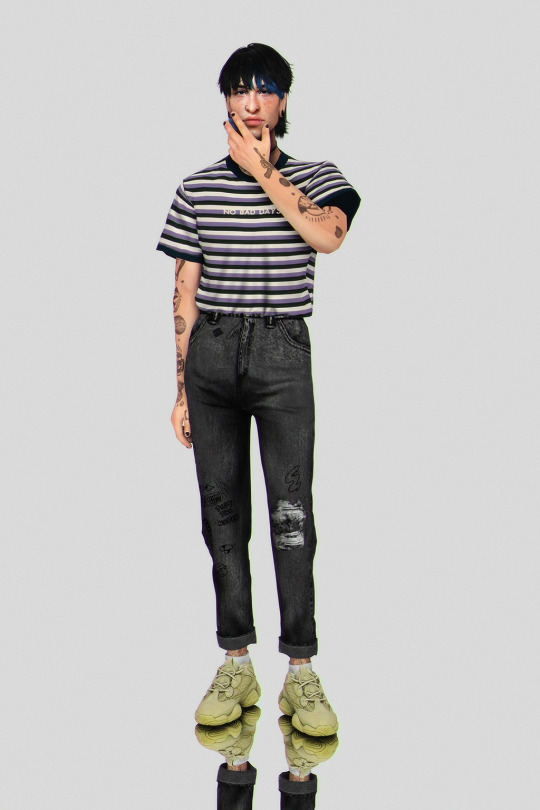
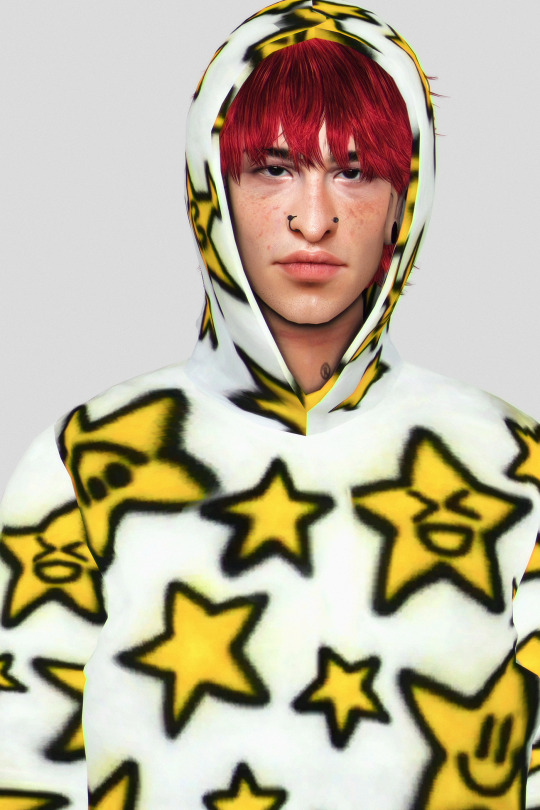
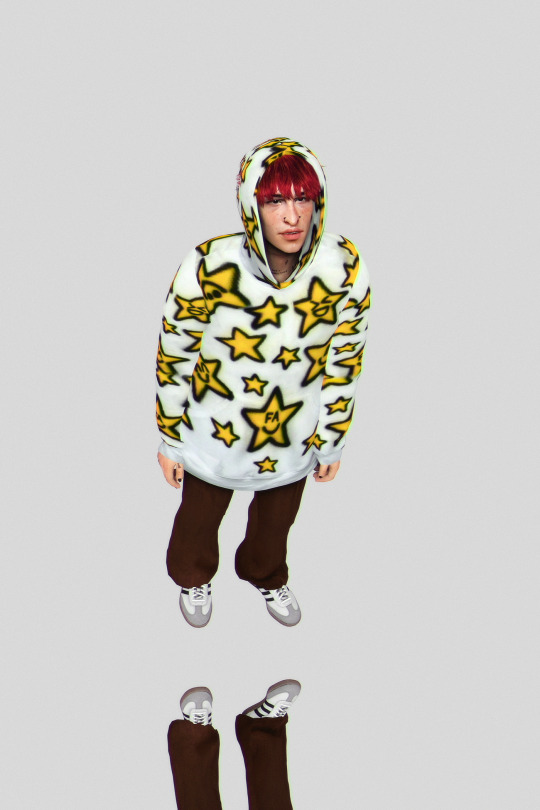
#17: “Woohoo birthday transformation. Happy birthday starboy. 😎"
223 notes
·
View notes
Text
Sonne und Mond
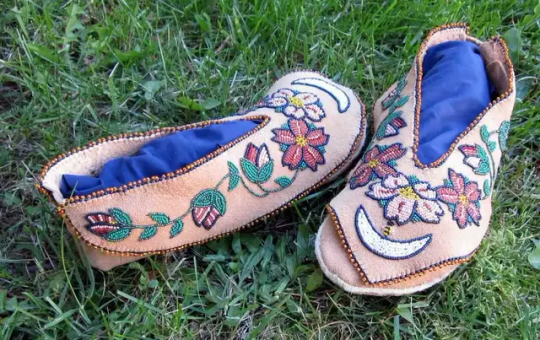
Sonne und Mond ⋆ Märchen aus Kanada ⋆ Nordamerika
In uralten Zeiten lebte einst ein altes Mütterchen, das hatte eine allerliebste Enkelin bei sich, die das schönste Mädchen war, das die Sonne je gesehen hatte. Als diese zum jungfräulichen Alter herangereift war, fragte sie einst ihre Großmutter, ob es denn außer ihr keine Menschen mehr auf der Welt gebe. »Nein«, erwiderte die Alte; »früher lebte die ganze Erde voll Männer und Frauen, doch da sie alle einen sehr schlechten Lebenswandel führten, so ließ sie der Große Geist durch einen bösen Manitu vernichten. Hätte ich zu jener Zeit nicht über ungewöhnlich mächtige Medizinkräfte verfügt, so wären wir beide auch nicht mehr am Leben.« Das klang doch der Enkelin ein bisschen zu kurios, und sie dachte bei sich selbst: Wenn sich meine Großmutter gerettet hat, so sind gewiss auch noch mehr dem Untergang entronnen. Sie nahm sich daher vor, die Welt zu bereisen und nachzusehen. Darauf machte sie sich zehn Paar Moccassins, füllte ihre Taschen mit Lebensmitteln und ging fort in die Fremde. An jedem Abend zog sie ihre Beinkleider ab und ließ sie zurück zur Großmutter gehen, damit sie dieser ihre Erlebnisse erzählen konnten. Am Morgen des zehnten Tages kam die Jungfrau in eine große Hütte, die aus zwölf Zimmern bestand, in denen sich aber niemand befand, weil, wie es schien, die Eigentümer auf die Jagd gegangen waren. Sie setzte sich darauf ruhig dicht neben die Tür und wartete bis zum Abend, wo der Reihe nach zwölf Brüder hereinkamen, von denen jeder seinen besonderen Platz einnahm. Erst der zehnte bemerkte die Jungfrau, ergriff sie an der Hand, führte sie an seinen Platz und sagte: »Mein liebes Mädchen, ich freue mich, dass ich dich gefunden habe, denn ich bin's herzlich satt, noch weiterhin meine Moccassins zu n��hen, und hoffe, dass du mir diese Arbeit abnehmen wirst.« Das Mädchen war's zufrieden, heiratete ihn und erfreute ihn nach einem Jahr durch die Geburt eines Knäbleins, das aber leider schon nach dem dritten Tag wieder starb, worüber der Vater sich so sehr grämte, dass er ebenfalls starb. Danach heiratete die Witwe den jüngsten Bruder, der auch gleich starb, und so heiratete sie alle nach der Reihe bis zum ältesten. Da dieser sie jedoch nicht liebte, wurde sie täglich trauriger und nahm sich zuletzt vor, den Ort ihres Kummers heimlich zu verlassen. Ihre Hütte war nach Art der Medizinhütten gebaut; sie hatte den Eingang auf der östlichen und den Ausgang auf der westlichen Seite. Durch letzteren floh sie. Sie zog den Türpfosten aus der Erde, kroch mit ihrem Hund in das Loch und verschwand so spurlos. Der Pfosten nahm danach seine alte Stelle wieder ein. Die Frau kam zuletzt ans Ende der Welt, das weit im Osten liegt. Dort saß Menabuscho und fischte. »Mein Großvater«, sagte sie zu ihm, »ein mächtiger Geist quält und verfolgt mich.« Doch der Alte antwortete erst, nachdem sie dies noch zweimal wiederholt hatte. »Du störst mich«, sagte er. »Es ist sonst kein mächtiger Geist auf der Welt als ich; geh nur getrost weiter.« Dabei zeigte er nach Westen in die Luft. Sie folgte und stieg in die Höhe. Ihr Gemahl, der inzwischen manche tränenreiche Nacht durchwacht hatte, hatte sie nach allen Richtungen gesucht, aber nirgends - weder in der Luft noch auf der Erde - eine Spur von ihr gefunden. Doch als er zuletzt alle Pfosten seines Wigwams aus der Erde zog, fand er, dass sie beim westlichen Ausgang durch eine Höhle entwischt war. Gleich eilte er ihr nach und kam ebenfalls zum fischenden Menabuscho, den er dreimal nach seiner Frau fragte. Aber der Alte stellte sich taub und gab ihm keine Antwort. Der Jäger schrie immer lauter, wurde sogar recht grob, bis sich dann Menabuscho ärgerlich umdrehte und ihm entgegnete: »Es ist allerdings eine Frau diesen Weg gekommen, aber dir gehört sie nicht!« Als er dies hörte, setzte er gleich seine Verfolgung fort, und Menabuscho rief ihm nach: »So sollst du deiner Frau nachlaufen, solange die Erde steht, und sollst von den Menschen Gischiguhk (der Tagmacher) genannt werden.« Die Frau - der Mond - kam bald darauf wieder zum Alten zurück und bedankte sich für ihre glückliche Rettung. Dabei sagte sie ihm mit liebenswürdiger Wichtigkeit heimlich ins Ohr, dass sie noch eine gut erhaltene Großmutter zu Hause habe, die sich recht famos zu seiner Frau eignen würde. Schmunzelnd legte darauf Menabuscho seine Angel nieder, ging schnurstracks hin zur Alten und heiratete sie. Aus ihrer Verbindung entsprangen die Menschen. Jene Frau wurde späterhin Tibikdschisis oder die Sonne der Nacht genannt. Die zwölf Brüder sind die Monate, die bei ihrer Berührung mit Tibikdschisis der Reihe nach sterben. Sonne und Mond ⋆ Märchen aus Kanada ⋆ Nordamerika Read the full article
0 notes
Text

74 notes
·
View notes
